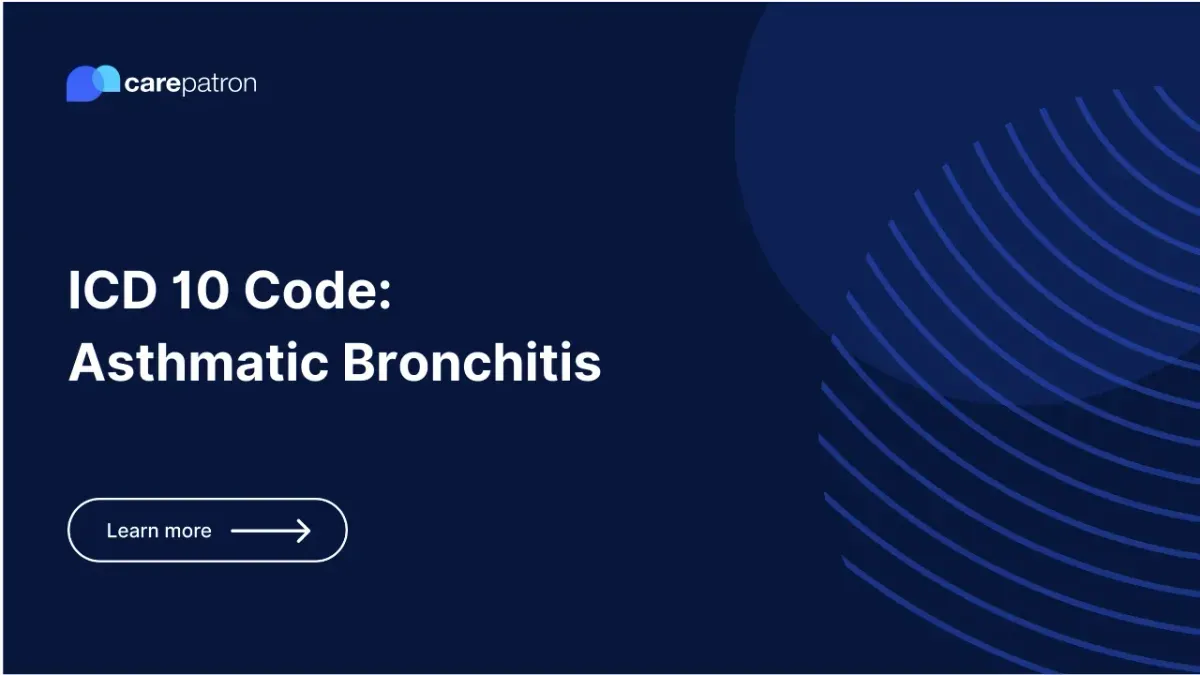
Asthmatic Bronchitis ICD-10-CM Codes
Understand the essential ICD-10 codes for diagnosing and billing asthmatic bronchitis.
Use Code
Commonly asked questions
An asthmatic bronchitis ICD-10-CM code should be used when a patient presents with symptoms of bronchial inflammation occurring concurrently with asthma, particularly when there is an acute exacerbation or chronic overlap. These codes are appropriate when both conditions influence clinical management, require medical intervention, and are documented in the patient’s record.
Treatment for asthmatic bronchitis typically includes bronchodilators to relieve airway obstruction, inhaled corticosteroids to reduce inflammation, and in some cases, antibiotics if a bacterial infection is suspected.
Management may also involve avoiding environmental triggers, using leukotriene modifiers, and addressing comorbid conditions like allergic rhinitis or chronic obstructive pulmonary disease.
A diagnosis code for asthmatic bronchitis indicates the documented presence of both asthma and bronchial inflammation, which may be acute or chronic in nature. It reflects the need for coordinated treatment strategies targeting both airway hyperresponsiveness and bronchial irritation or infection.
EHR and practice management software
Get started for free
*No credit card required
Free
$0/usd
Unlimited clients
Telehealth
1GB of storage
Client portal text
Automated billing and online payments
